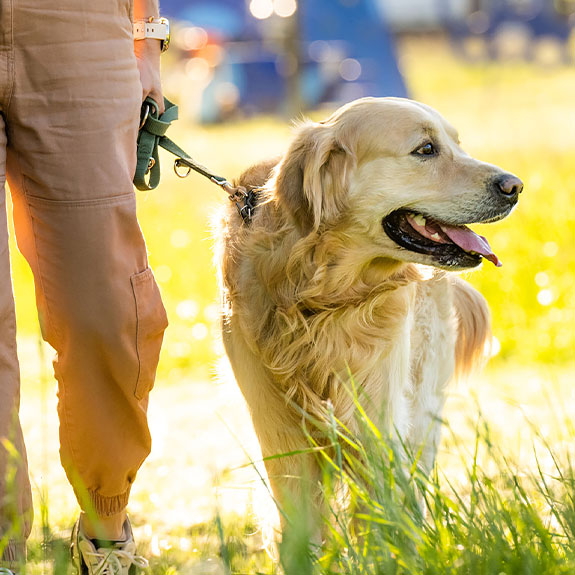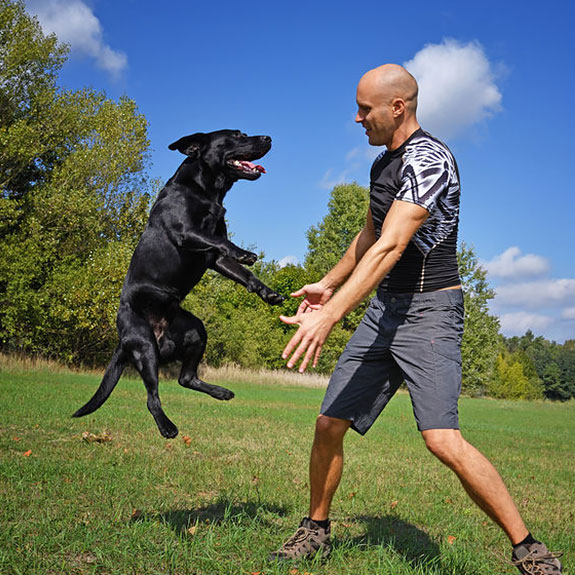
It was a typical Monday morning for Jane, a certified dog trainer. She wakes up at 6 am to the sound of her alarm, groggily reaching for her phone to turn off the loud buzzing noise. As she stretches and yawns, she mentally prepares for her busy day ahead. Jane has always loved dogs since she was a little girl, and her passion for training and working with them has led her to become one of the most sought-after dog trainers in her area.
After getting dressed and grabbing a quick breakfast, Jane heads out to her first client’s house. She does most of her training sessions in the client’s home as it allows her to work with the dog in its natural environment. Today, she has a session with a young Golden Retriever named Max. Max’s owners have reached out to Jane for help with his excessive barking and jumping on guests.
As Jane arrives at the client’s house, she is met with wagging tails and excited barks from Max. She greets him with a treat and gives him a few pats on the head before getting to work. Jane has received her certification from the Certification Council for Professional Dog Trainers (CCPDT), which is the leading independent certifying organization for the dog training profession. This certification has not only given her credibility, but it has also provided her with the knowledge and skills needed to work effectively with different types of dogs.
With Max, Jane starts by observing his behavior and identifying the triggers that cause him to bark and jump. She then creates a personalized training plan, which includes positive reinforcement techniques to help him learn how to greet guests calmly. After an hour of training, Max’s owners are amazed at the progress he has made in just one session. They thank Jane and schedule another session for next week.
After finishing up with Max, Jane heads back to her office to catch up on some paperwork and emails. She also takes this time to review her schedule for the week and prepare for her group classes. Jane has spent years honing her skills as a dog trainer, and she believes that continuing education and advanced training are essential to stay at the top of her game. She has taken multiple courses and workshops to learn about new training methods, behavior modification techniques, and dog nutrition. She has also attended seminars and conferences, where she has had the opportunity to network with other trainers and experts in the field.
One of the most significant advancements in dog training has been the introduction of online learning. Jane has embraced this new form of education, and it has allowed her to reach a broader audience and expand her services. She has taken online courses from reputable organizations such as the Karen Pryor Academy, which offers a variety of courses on different topics related to dog training and behavior. These courses have not only given her new insights and techniques but have also allowed her to earn certifications and credentials to add to her resume.

As the afternoon approaches, Jane heads to the park for her group classes. She offers beginner, intermediate, and advanced classes for dogs of all ages and breeds. The classes are not only an opportunity for the dogs to learn obedience skills, but they also provide a chance for them to socialize with other dogs and people. Jane’s group classes are always in high demand, and she often has a waitlist for new clients.
Today’s class is an intermediate class, and there are six dogs and their owners in attendance. Jane starts by going over the basic commands and then moves on to more challenging tasks, such as heel walking and off-leash recall. The dogs are all at different levels, and Jane tailors her instructions to meet their individual needs. She also provides feedback and guidance to the owners, as training is just as much about teaching the owners as it is about training the dogs.

After the class, Jane takes some time to chat with the owners and answer any questions they may have. She also offers them resources and recommendations for further reading and training. Jane believes that educating dog owners is just as important as training the dogs themselves. She encourages her clients to continue learning and practicing with their dogs to maintain the skills they have learned in her classes.
As the day comes to an end, Jane heads back home to her own furry companions. She has two dogs of her own, both rescue mixes, and they are her pride and joy. Even though she spends most of her days working with other people’s dogs, she always makes time for her own. She takes them on long walks, plays with them in the yard, and even trains them on new tricks.
As she reflects on her day, Jane is grateful for the opportunities that being a dog trainer has given her. She has made a career out of her passion for animals, and she has helped countless dogs and their owners build stronger bonds through training. She knows that there is always more to learn, and she is excited to continue her education and stay updated on the latest techniques and advancements in the field.
Jane is a prime example of how distance learning has revolutionized the world of education, not just for humans but for our furry friends as well. With online courses and certifications, dog trainers can expand their knowledge and skills without ever having to leave their home. This has not only made education more accessible but has also helped to elevate the standards and professionalism of the dog training industry.
As Jane gets ready to turn in for the night, she checks her email one last time and sees a message from a client thanking her for her help with their dog’s behavioral issues. She smiles, knowing that she has made a positive impact on another dog’s life, and looks forward to doing it all over again tomorrow. Being a dog trainer is not just a job for Jane; it’s a way of life, and she couldn’t imagine doing anything else.



